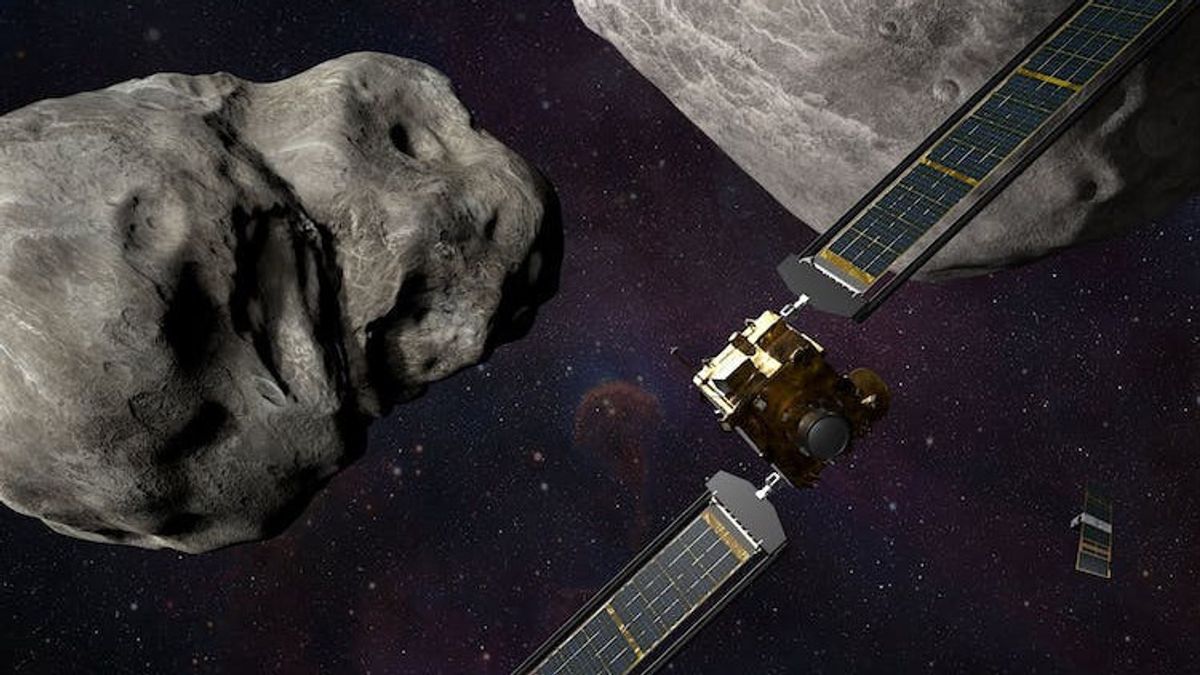JAKARTA - Humans face a worrying possibility of extinction due to a large space rock hitting Earth at a speed of thousands of miles per hour. A new report shows that we are very unprepared for such a disaster, even if we had a 14-year warning earlier.
Official documents published by NASA and the US government reveal that the asteroid's disaster management plan is "undefined." The report highlights "constrained readiness" to carry out space missions that could reduce the danger of an asteroid's impact, similar to the 1998 film plot "Armageddon," in which NASA sent a team to destroy asteroids that point to Earth.
On average, Earth is hit by a rock as big as a football field every 5,000 years and an asteroid that can destroy civilization every one million years, according to NASA's Near-Earth Object Program.
This report comes as part of the fifth "Inter-Institutional Planetary Defense Table Training", a simulation event conducted by NASA and the US government to assess readiness to face the impact of asteroids. Although there is no significant threat of an asteroid impact in the near future, this biennial exercise evaluates how top experts will respond to such scenarios.
"The process of making decisions about space missions in asteroid threat scenarios remains unclear," the report said. The exercise considers a national and global response to a hypothetical situation where previously undetected asteroids have a 72% chance of hitting Earth in about 14 years.
The participants included representatives from NASA, FEMA, and the planetary defense community. They face a scenario where important follow-up observations will be delayed for at least seven months as the asteroid passes past the sun, which is a critical loss of time for planning and response.
"Uncertainty under these initial conditions allows participants to consider a series of very challenging circumstances," said Lindley Johnson, a planetary defense emeritus official at NASA's Head Office in Washington.
The exercise found that "decision-making and risk-tolerance processes" were poorly understood among officials. More worrying, the findings suggest that "an asteroid impact disaster management plan has not been defined" and that "timely global coordination" for public awareness requires more attention.
SEE ALSO:
While fictional depictions like "Armageddon" are dramatizing an asteroid threat, real-world efforts such as NASA's DART (Double Asteroid Redirection Test) mission provide hope. In September 2022, the DART spacecraft managed to crash into the Dimorphos asteroid, suggesting that such a mission could potentially change the threatening space rock path.
Despite this progress, the report emphasizes the need for clearer strategies and international cooperation to protect the Earth from potential asteroid impacts. On average, Earth is hit by a rock as big as a football field every 5,000 years, and an asteroid that can destroy civilization every one million years, according to NASA.
Asteroids such as Ceres, the largest known in the Solar System with a diameter of 580 miles, pose a minimal threat due to its distant orbit. However, some types, such as asteroids "stretched debris," present unique challenges. This loose rock can absorb impact energy, making diversion efforts ineffective.
With the possibility of a devastating asteroid impact, this report serves as an important reminder of the need for global readiness and advanced planning to protect our planet.
The English, Chinese, Japanese, Arabic, and French versions are automatically generated by the AI. So there may still be inaccuracies in translating, please always see Indonesian as our main language. (system supported by DigitalSiber.id)


















